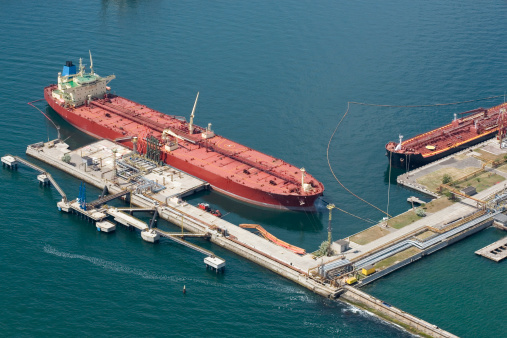The United States is poised to shake up world energy markets with expanded liquefied natural gas (LNG) deliveries later this year as four new LNG export terminals come on line. The four terminals would be able to export a combined 70 billion cubic meters (BCM) of LNG annually.
According to the April 26 UK Telegraph, U.S. Energy Secretary Ernest Moniz commented on the new LNG export capacity saying, “We anticipate becoming big players, and I think we’ll have a big impact. We’re going to influence the whole global LNG market.”
“Certainly in this decade, there’s a good chance that we will be LNG exporters on the scale of Qatar, which is today’s largest LNG exporter,” Moniz said at the IHS CERAWeek energy summit in Texas.
Qatar exports just over 100 billion cubic meters (BCM) annually.
Just a few short years ago, the U.S. was looking at expanding LNG import terminals as natural gas shortages loomed. Fracking changed that.
Members of the Fracking industry assembled at the world’s “energy Davos” in Houston said exports could ultimately be much higher, eventually surpassing Russia as the world’s biggest supplier of natural gas of all kinds.
The Telegraph identifies the mile-deep Marcellus shale basin, stretching from West Virginia through Pennsylvania to New York state, as largest driver the natural gas production, although a number of other basins have also seen exponential growth in production in since the mid-2000’s as fracking took hold. Still, Marcellus alone produces 113 BCM a year, roughly equivalent to Russia’s exports to Europe.
Profits Despite Low Prices
Steve Mueller, chairman and CEO of Southwestern Energy, the fourth largest producer of natural gas in the US rejects claims current low prices are a threat to the continued vitality of the industry. According to Mueller, rapidly falling drilling costs combined with improved operational efficiency are ensuring the industry can make a profit even in the face of persistently low prices. The Telegraph quotes Mueller saying, “Rig efficiency was flat for thirty years but since then we’ve cut by five times. We have set in motion something that you can’t deny and is irresistible.” For instance, Mueller reports in in 2007 it took his company 17 days to drill a 2,600 ft. well. By contrast Southwest recently drilled 5,400 ft. well in six days. “The new technology is amazing. We have a drill-bit with a chip inside that makes its own changes,” he said.
Mueller anticipates a to 10 percent annual growth in output over the next three years, despite a drop in gas prices to around $2.60 per million British thermal units (BTU). “If it stays around $3, we’ll be fine,” he said.
Amazingly, drillers can produce a third more natural gas today with 280 rigs than they did in 2009 with 1,200 rigs. And more good news for drillers comes in the form of US Energy Information Administration (EIA) estimates natural gas prices will rise to $4.88 in real terms by 2020, and $7.85 by 2040.
Critics have bemoaned the slow pace of the Obama administration’s approval of LNG export terminals. Of the 14 proposed, some stuck in the approval process for more nearly 8 years, the administration has only approved four.
Isaac Orr, a research fellow at The Heartland Institute, said, “Natural gas export facilities should be expedited.” Commenting on the approval of an LNG plant at Covepoint Maryland in late 2014, he said, “The administration did get this right one right, but even a broken clock is right twice a day. Since there are no new or unique risks from these plants, the remaining liquefaction/export facilities currently under review should get expedited approval.”
Expanded LNG Exports has Geopolitical Repercussions
Speaking at a 2014 St. Petersburg economic summit Russian president Vladimir Putin warned that US shale gas was abruptly changing the international order, seriously undermining his country’s energy dominance in Europe. The early effects have forced down global LNG prices, creating a rival source of gas supply in Europe. Expanded American LNG exports would further erode Gazprom’s pricing power in Europe, and erode the Kremlin’s political leverage.
European countries are gearing up to receive American LNG. Lithuania just completed its “Independence” terminal and Poland expects a new terminal to come online later in 2015.
H. Sterling Burnett, Ph.D. ([email protected]) is managing editor of The Heartland Institute’s Environment & Climate News.





